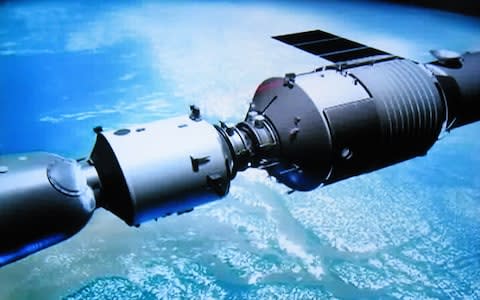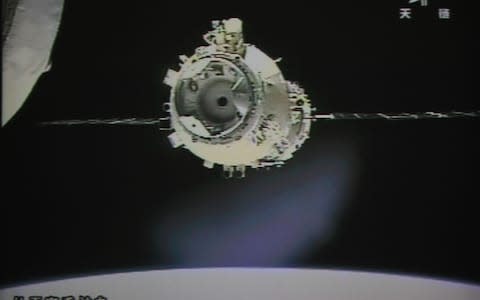Chinese space station Tiangong-1 set to crash land on Monday

Call it Apocalypse not quite Now. The Chinese space station hurtling uncontrollably towards Earth is estimated to smash into the planet a day later than expected.
Tiangong-1, known as "Heavenly Palace", was due to have entered the Earth’s atmosphere by Sunday afternoon but now may not arrive until Monday morning.
The delay, which offers Easter celebrators a temporary reprieve, was announced by the European Space Agency [ESA}, which is monitoring the station’s movements.
Yet the timings remain “highly variable” and it is unclear where and in what state the abandoned craft will eventually hit.
The space station, placed into orbit in 2011, was due for a controlled re-entry but stopped working in March 2016. Without its engines it is unable to change course.
How China lost control of it's space station
It is said to be orbiting the Earth 16 times a day and tumbling over every three minutes in a downward spiral towards our planet.
Yet experts said the chance of injury from the craft to those on the ground is minimal, given it is likely to break up during re-entry.
Nearly 6,000 uncontrolled re-entries of large objects have occurred over the past 60 years without harming anyone, according to the ESA.

The China Manned Space Engineering Office moved to play down concerns on its WeChat social media account, saying there is "no need for people to worry".
A spokesman said that such falling spacecraft do "not crash into the Earth fiercely like in sci-fi movies, but turn into a splendid (meteor shower) and move across the beautiful starry sky as they race towards the Earth".
Lu Kang, a spokesman for China’s foreign ministry, said the country would step up efforts to coordinate with the United Nations Office for Outer Space Affairs as the craft approaches.
During re-entry, atmospheric drag will rip away solar arrays, antennas and other external components at an altitude of around 100 kilometres (60 miles), according to the Chinese space office.

The intensifying heat and friction will cause the main structure to burn or blow up, and it should disintegrate at an altitude of around 80 kilometres, it said.
Most fragments will dissipate in the air and a small amount of debris will fall relatively slowly before landing across hundreds of square kilometres, most likely in the ocean.
One expert said the craft would break up into a "series of fireballs”, adding it would be a “spectacular show”.

